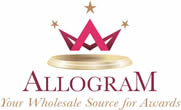Best Methods for Nominating Award Recipients
Once you’ve identified the behavior or performance to be recognized, you must determine how employees will be selected for the award. One key to success is to clearly communicate the criteria for recognition in advance so that those who meet the criteria, embody that behavior, or have outstanding performance in that arena, are those who receive the recognition. Below are some ideas on how to nominate and select those employees who best fit the award criteria, starting with more formal recognition.
Formal recognition tends to consist of an event where nominations may be read and final recipients are recognized in front of their peers and managers. The event need not be extravagant and it may be as simple as a unit or department meeting. What defines this type of recognition is that it is formally given and the recipient publically recognized.
Nominations: Who will be considered?
There are a variety of ways to nominate an individual, team, or unit for consideration of an award, as long as the nominators clearly understand the criteria necessary for recognition. For each of these examples, a nomination form should allow the opportunity to describe exactly why the nominated person/team meets the criteria for the award and even provide specific examples. Providing nominators an opportunity to describe the particular reason for nomination not only highlights great performance, but outlines what was done to justify the specific award.
The following are ideas for nominating recipients and narrowing the field before discussing the final selection of the award winner.
Customer Feedback
This nomination option elicits feedback from the individuals who work with your employees, teams, and units. There is no better indicator of performance or behavior, especially for departments or units that are customer oriented than by eliciting feedback from the customer. There are several methods that may be used to collect this feedback, such as sending an email to an existing list of customers, an online form, using a survey tool such as surveymonkey.com, or using a paper customer feedback form. There should be some form of communication with the customer in describing the award criteria and any other pertinent instructions or timelines involved in collecting their feedback.
Peer Nominations
One of the most meaningful methods of recognizing employees is to encourage everyone in the organization to recognize one another for their achievements. Coworkers often have the best view when it comes to seeing the efforts of fellow employees and it is often more significant to receive recognition from the people around you than from any other source. This is best done by sending out a communication to all the employees in your department with a description of each award, the criteria for meeting the award, and instructions on how to nominate individuals or teams, if eligible. The instructions should include a deadline for submitting nominations and a nomination template to follow which includes the award criteria, the nominee and space for an open-ended response as to why the nominee meets the award criteria. This must be planned in advance with enough time before any formal recognition ceremony, allowing time for effective use of one of the selection methods below.
The nomination process should be voluntary, but for this to work most effectively, a high response rate is optimal. Multiple reminders to employees before the deadline and encouragement to participate in the program will help make this an effective nomination process. The Peer Nomination method can be open to anyone in the department or organization, or if it makes sense, can be limited to smaller groups such as non-managers or front-line employees.
Nominated by Management
This nomination method is limited to the supervisors and managers in the organization and they may still choose individuals, teams, or units to be nominated. This method provides the opportunity for supervisors to recognize the employees whose performance they are expected to oversee on a daily basis. It may also limit or even exclude management from receiving the awards and in a large organization could be a good method for recognizing and encouraging front-line staff and others in the organization. Keep in mind this is simply for the nomination of award recipients and it could correspond to any of the following selection methods. The same considerations for communicating, collecting nominations, and timelines as discussed above in the peer nomination process also pertain here.
